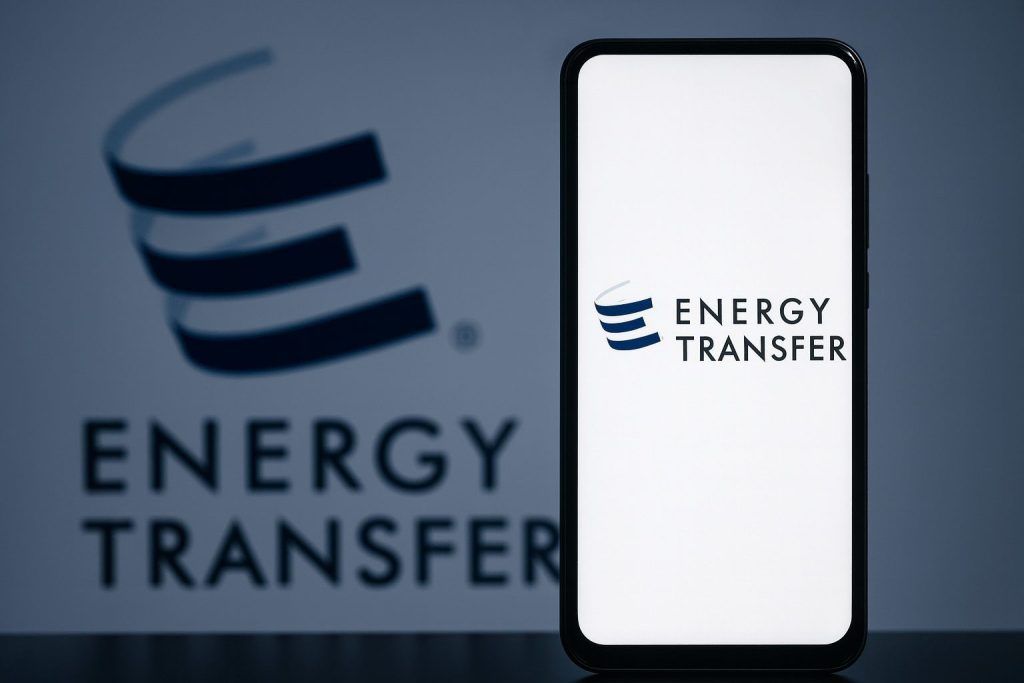Updated: November 22, 2025 (U.S. markets closed)
General Electric Company, now operating as GE Aerospace under ticker GE, heads into the weekend after a rare down week, even as it lands major engine orders and posts strong earnings. The stock has been one of 2025’s standout winners—but its valuation is now front and center for investors.
GE stock price today: how shares moved into the weekend
U.S. markets are closed today (Saturday), so the latest actionable price for GE stock is Friday’s close:
- Last close (Fri, Nov 21, 2025):$287.44 per share [1]
- Daily move: -1.1% on the day
- Intraday range: roughly $284.04 – $291.71 [2]
- Volume: ~5.6 million shares, slightly above its recent average [3]
For the week, GE slid from about $304.82 last Friday to $287.44 this Friday—roughly a 5.7% weekly decline, giving back a slice of its recent gains. [4]
Zooming out, though, the stock’s 2025 story is still extraordinary:
- Year-to-date performance: analyses put GE’s 2025 gain at around 78–82%, depending on the measurement date. [5]
- Multi‑year returns: one Simply Wall St review estimates a ~470% gain over three years, while another notes a ~560% total return over five years. [6]
In other words: this week was a breather after a near‑vertical climb.
Why GE stock cooled this week despite strong fundamentals
1. A lofty valuation finally got investors’ attention
Even after the pullback, GE trades on rich earnings multiples:
- Trailing P/E: about 38.3×, based on a trailing 12‑month EPS of $7.51 and Friday’s close of $287.44. [7]
- Forward P/E: around the low‑40s, depending on which analyst set you use. [8]
A Simply Wall St valuation review pegs GE’s P/E at ~40×, versus a peer average of ~25.9× and an Aerospace & Defense industry average around 38.5×, concluding the stock looks overvalued on both DCF and P/E-based models. [9]
Value‑focused platforms go further. One P/E‑based relative valuation model from ValueInvesting.io suggests a “fair” price around $178 (range $151.89–$212.41), implying roughly 38% downside from today’s level if the stock were to trade back in line with its historical multiples. [10]
Put simply: after an ~80% year, a lot of good news is already in the price.
2. Insider selling added to short‑term pressure
On Friday, GE’s drop was linked in part to insider selling:
- Senior VP Russell Stokes sold 8,000 shares at an average price of about $297.71, a transaction worth roughly $2.38 million, trimming his stake by just over 5%. [11]
- MarketBeat notes the stock slipped around 1.1% on the day, on volume modestly above average, as traders digested the sale. [12]
Insider sales don’t automatically mean “top” — executives diversify or manage liquidity all the time — but after a huge run‑up, any sizeable sale can act as a psychological speed bump.
3. A “risk‑off” pause after a huge run
Fundamental data remains strong (more on that below), but a series of independent valuations now flag GE as significantly above most intrinsic value estimates, including DCF fair values in the $215–$216 range (roughly 40% below current price). [13]
When a stock has:
- Multi‑year triple‑digit returns, plus
- A premium valuation relative to peers, plus
- News of insider selling
…short‑term traders often take profits, even if the long‑term story remains intact.
Earnings & guidance: GE’s aerospace engine story is still powerful
If the share price is finally wobbling, the underlying business is not.
Q3 2025: another beat
In its Q3 2025 results, GE Aerospace delivered:
- Adjusted EPS:$1.66, up from $1.15 a year ago, beating consensus estimates of about $1.45–$1.47. [14]
- Revenue: roughly $12.2 billion, up about 24% year‑on‑year, driven by both engine shipments and service demand. [15]
- Operating profit (non‑GAAP): about $2.3 billion, up 26%, with operating margins around 20% holding steady despite the ramp‑up. [16]
- Free cash flow (FCF): about $2.36 billion in the quarter, up ~30% versus 2024. [17]
That combination—double‑digit revenue growth, expanding profits, and strong cash flow—is exactly what investors hoped the aerospace‑focused GE would deliver after its breakup.
Guidance raised: 2025 looks stronger than planned
Management has backed those numbers with more optimistic guidance:
- GE Aerospace now expects 2025 adjusted EPS of $6.00–$6.20, up from a prior $5.60–$5.80 range. [18]
- The company also lifted its forecast for LEAP engine deliveries this year, now guiding to >20% year‑on‑year growth, citing improving supply chain execution and firm airline demand. [19]
For context, the Q3 press release showed:
- Adjusted net income: $1.76 billion vs $1.26 billion last year (EPS $1.66 vs $1.15). [20]
- Nine‑month FCF: about $5.9 billion, up ~27%. [21]
In short, the fundamental narrative is one of strengthening margins and cash flows—a big reason the share price has re‑rated so aggressively.
Fresh engine orders from Dubai Airshow 2025: backlog gets even deeper
The week’s most eye‑catching growth news came from the Dubai Airshow (Nov 17–21, 2025), where GE Aerospace cemented its role as a key propulsion partner for Gulf carriers. [22]
Emirates: 130 GE9X engines for 777‑9s
GE announced a major deal with Emirates:
- Emirates ordered 65 additional Boeing 777‑9 aircraft, and alongside that,
- 130 GE9X engines from GE Aerospace, plus spares and long‑term services. [23]
That brings Emirates’ total GE9X engine order book to more than 540 units, forming a massive long‑duration revenue stream spanning original equipment and high‑margin aftermarket services. [24]
flydubai: 60 GEnx‑1B engines for first widebody fleet
GE also inked a 60‑engine GEnx‑1B deal with flydubai, covering:
- Engines for 30 Boeing 787‑9 Dreamliners
- Spare engines
- A long‑term services agreement to support the airline’s new long‑haul operations. [25]
These announcements reinforce a key part of the GE thesis:
- Large installed base + long‑dated service contracts = recurring, high‑margin cash flow.
They also dovetail with broader industry data: CFM (GE’s joint venture with Safran) expects LEAP engine shipments to grow more than 20% in 2025, and Safran recently raised its own guidance on the back of strong engine services revenue. [26]
A pure‑play aerospace giant, not the old conglomerate
For SEO and search results, many investors still type “General Electric stock,” but the business behind GE is now almost entirely aerospace.
Following the completion of the company’s multi‑year breakup—spinning off GE HealthCare (GEHC) in 2023 and GE Vernova (GEV) in 2024—GE Aerospace is the primary remaining entity under the General Electric Company legal shell. It focuses on: [27]
- Commercial jet engines (e.g., LEAP, GE9X, GEnx)
- Defense engines (e.g., F110 powering F‑15 and F‑16 fighter aircraft) [28]
- Engine components, electrical power systems, and mechanical aircraft systems
That focus is starting to show up in large defense wins, such as:
- A U.S. Air Force contract worth up to $5 billion to support F110 engines via an IDIQ (indefinite delivery/indefinite quantity) framework, alongside nearly $1 billion in planned 2025 factory and supply‑chain investments in the U.S. [29]
The transformation from sprawling conglomerate to aerospace specialist is one reason the market has re‑rated GE closer to high‑quality aerospace peers instead of legacy industrial conglomerates.
Valuation: premium multiples after a blockbuster run
Where GE trades now
Based on Friday’s close of $287.44:
- Trailing P/E: ~38.3× (TTM EPS $7.51) [30]
- Forward P/E: roughly 42–44×, depending on the source and forward EPS assumption. [31]
- Price / Sales: around 7×; the 5‑year average is closer to 3×, highlighting how far the multiple has expanded. [32]
Relative to peers:
- Simply Wall St estimates GE’s P/E (~40×) sits above both its direct peer average (25.9×) and the broader Aerospace & Defense average (~38.5×), suggesting a meaningful valuation premium. [33]
What different models say about “fair value”
You’ll find significantly different answers depending on the framework:
- Discounted cash flow (DCF)
- DCF analyses from Simply Wall St put intrinsic value around $215–$216 per share, implying the stock trades at a ~39–43% premium to those fair values. [34]
- Relative P/E valuation
- ValueInvesting.io’s P/E multiple model suggests a fair price around $178, within a range of $151.89–$212.41, again pointing to 30–45% overvaluation versus current levels. [35]
- Relative to GE’s own history & sector
- Intellectia.ai labels GE’s forward P/E of about 42.9× as within a “fair zone” relative to its last 5‑year averages, but notes elevated metrics such as EV/EBITDA (~27.7× vs a 5‑year average of ~18.9×), EV/EBIT (~32× vs ~22×), and P/S (~6.75 vs 2.92), placing GE toward the overvalued side of historical ranges on several counts. [36]
In plain English:
Most valuation models say GE stock is priced for very strong execution and relatively little margin of error.
That doesn’t mean the stock must fall—high‑quality growth names can “grow into” rich multiples—but it does mean future returns are more sensitive to any disappointment in earnings, cash flow, or industry demand.
Balance sheet, dividend and buybacks: quality, not income
Stronger balance sheet and credit upgrade
The breakup and refocus on aerospace have significantly cleaned up GE’s balance sheet. S&P Global Ratings recently upgraded General Electric to ‘A‑’ with a stable outlook, citing: [37]
- A clearer, more resilient business model centered on aerospace
- Strong free‑cash‑flow generation
- An expectation that adjusted leverage stays below ~2.0×
Investment‑grade balance sheet strength gives GE more flexibility to:
- Continue reinvesting in R&D and manufacturing capacity
- Pursue selective M&A
- Maintain dividends and share buybacks through cycles
Dividend: token, but growing
For income investors, GE’s dividend isn’t the main attraction yet:
- The board has been declaring a quarterly dividend of $0.36 per share throughout 2025. [38]
- Based on trailing payments of $1.12 per share and the current stock price, the trailing yield is roughly 0.4%. [39]
GE also flagged a 30% dividend increase and a $7 billion buyback earlier in the year as part of its capital‑return framework, underscoring management’s confidence in cash generation, even if current yields remain modest. [40]
Bottom line: this is a growth and quality story, not an income play—for now.
Key risks GE stock investors should keep in mind
Even bullish investors should be aware of several risk vectors:
- High expectations & rich valuation
- With P/E multiples well above peer averages and most valuation models flagging overvaluation, any earnings miss, guidance cut, or industry slowdown could trigger an outsized share‑price reaction. [41]
- Aerospace cycle & macro risk
- GE is now heavily exposed to airline health, air‑traffic growth, and defense budgets. Airline profitability could be hit by recessions, fuel prices, or geopolitical shocks, which would feed through to engine orders and shop‑visit demand. [42]
- Supply chain and execution challenges
- Both GE and its partner Safran have grappled with supply chain bottlenecks, particularly around LEAP engines. While management says it is making progress and expects LEAP deliveries to rise >20% in 2025, any renewed bottlenecks could constrain revenue and margin expansion. [43]
- Program and technology risk
- GE is investing in increasingly complex propulsion technologies (e.g., GE9X, hybrid‑electric and advanced military engines). Technical setbacks, durability issues or safety incidents could lead to costly retrofits, reputational hits, or regulatory scrutiny. GE’s own cautionary statements highlight these uncertainties. [44]
- Regulatory and defense exposure
- Defense contracts, like the $5 billion U.S. Air Force F110 deal, depend on political and budgetary priorities. Changes in U.S. or allied defense policy could affect new orders, even if aftermarket revenue remains solid. [45]
What to watch next week for GE stock
With Dubai Airshow headlines and Q3 numbers now largely digested, GE investors may focus on:
- Analyst revisions: After GE raised guidance and announced new engine orders, watch for sell‑side EPS estimate changes and target‑price revisions, particularly around 2026–2027 earnings. [46]
- Order and backlog commentary: Any fresh disclosures on backlog size, LEAP shop‑visit growth, and GE9X/GEnx order momentum at upcoming conferences or investor days. [47]
- Macro signals: Aerospace is sensitive to global growth, travel demand and interest rates. Macro data or airline commentary that hints at slowing traffic or weaker profitability could weigh on sentiment even without GE‑specific bad news. [48]
Is GE stock a buy, hold, or avoid right now?
This article can’t tell you what to do with your own money, but we can frame the decision:
You might lean bullish if you believe that…
- Long‑term air travel growth and fleet renewal will keep engine demand robust.
- GE’s services‑heavy model will continue to deliver rising margins and strong FCF. [49]
- Management will successfully execute on LEAP, GE9X, and future platforms while maintaining its upgraded balance sheet and investment‑grade ratings. [50]
In that case, paying a premium multiple could be acceptable, especially if you’re focused on multi‑year compounding rather than short‑term volatility.
You might be cautious if you’re worried that…
- Current valuation embeds too much optimism, with multiple independent models suggesting 30–40% overvaluation versus DCF and historical‑multiple fair values. [51]
- We’re late in the aerospace up‑cycle, making it harder for GE to “beat and raise” enough to support its current P/E.
- Any hiccup in supply chains, engine durability, or defense budgets could quickly compress the multiple. [52]
For many investors, that translates into a “quality but expensive” conclusion:
GE today looks like a premier aerospace franchise with excellent execution, but its share price already reflects that status.
If you’re considering an investment, it’s worth:
- Stress‑testing your own fair‑value estimate (e.g., by adjusting growth and margin assumptions).
- Deciding what margin of safety, if any, you require given the cyclicality of aerospace.
- Making sure GE doesn’t become an outsized position in a portfolio already heavy in growth or industrials.
This article is for informational and educational purposes only and does not constitute financial advice, investment recommendation, or an offer to buy or sell any security. Always do your own research and consider speaking with a qualified financial adviser before making investment decisions.
References
1. www.investing.com, 2. www.investing.com, 3. www.investing.com, 4. www.investing.com, 5. simplywall.st, 6. simplywall.st, 7. www.financecharts.com, 8. www.gurufocus.com, 9. simplywall.st, 10. www.valueinvesting.io, 11. www.marketbeat.com, 12. www.marketbeat.com, 13. simplywall.st, 14. www.geaerospace.com, 15. leehamnews.com, 16. www.geaerospace.com, 17. www.geaerospace.com, 18. www.reuters.com, 19. www.reuters.com, 20. www.geaerospace.com, 21. www.geaerospace.com, 22. whatson.ae, 23. www.emirates.com, 24. www.geaerospace.com, 25. www.geaerospace.com, 26. www.reuters.com, 27. www.geaerospace.com, 28. www.reuters.com, 29. www.reuters.com, 30. www.financecharts.com, 31. www.gurufocus.com, 32. intellectia.ai, 33. simplywall.st, 34. simplywall.st, 35. www.valueinvesting.io, 36. intellectia.ai, 37. www.spglobal.com, 38. www.geaerospace.com, 39. stocksguide.com, 40. www.ft.com, 41. simplywall.st, 42. www.reuters.com, 43. www.reuters.com, 44. www.geaerospace.com, 45. www.reuters.com, 46. www.nasdaq.com, 47. www.geaerospace.com, 48. www.reuters.com, 49. www.geaerospace.com, 50. www.reuters.com, 51. simplywall.st, 52. www.reuters.com







